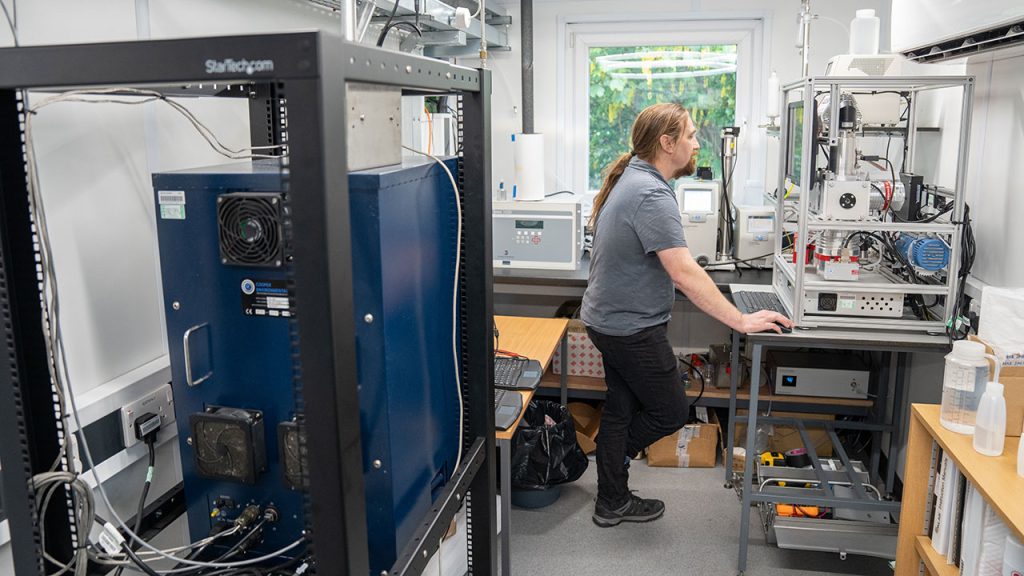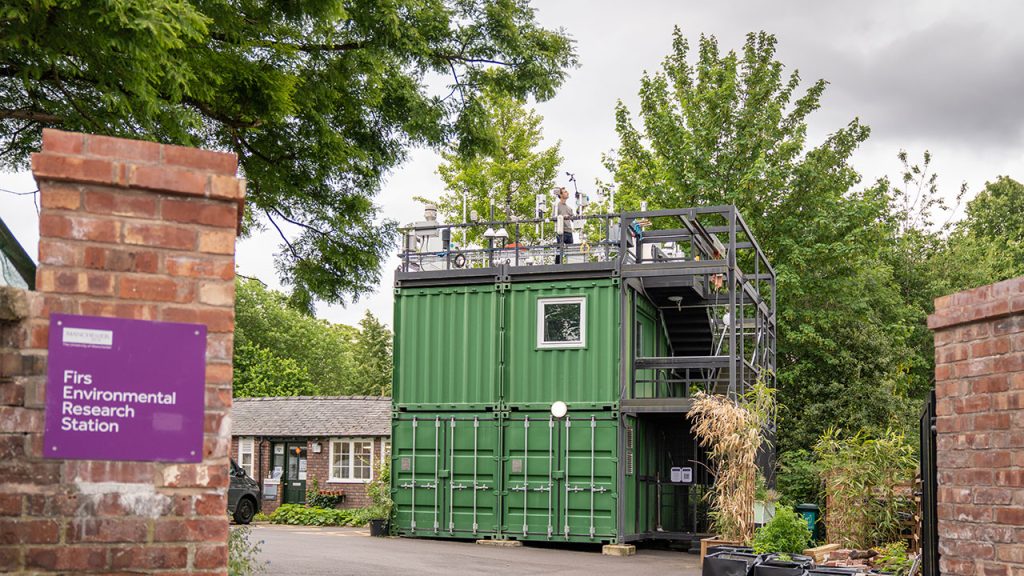
How UK’s record heatwave affected air pollution
Record hot temperatures are causing significant changes to levels of harmful pollution in our air, according to new data from last month’s heatwave.
In mid-July, the temperature in the UK exceeded 40°C for the first time since records began during a record-breaking hot spell.
Researchers from the National Centre for Atmospheric Science identified two significant changes in air pollution triggered by the heatwave event.
Drawing on a national network of air pollution monitoring sites, they found harmful ground-level ozone levels rose sharply, exceeding World Health Organisation guidelines.
Surprisingly, they also found small particulate matter was mostly made-up of organic material – particles that are potentially more toxic than non-organic material when breathed in.
Air pollution levels are closely linked to the weather, and hot spells often arrive hand-in-hand with poor air quality as the sun turns up the heat on a melting pot of airborne chemicals.
With climate change making heat waves more likely – and another extreme heat warning issued by the Met Office this week – we must consider the different ways that rising temperatures will affect us, including the air we breathe.
Analysing air pollution data over Monday 18th July and Tuesday 19th July, researchers at the National Centre for Atmospheric Science were able to tell us how the heat wave affected air quality in our towns and cities.
Ozone pollution
The heatwave led to dangerously high levels of ground-based ozone across the country, with particularly high concentrations in the South East, according to analysis led by Professor James Lee from the National Centre for Atmospheric Science and University of York.
Along the South East coast, monitoring stations recorded ozone levels that were nearly double the exposure limits recommended by the World Health Organisation, reporting around 200μg ozone per cubic metre.
In comparison, the annual mean concentration of ozone last year was around 70μg in rural areas, and the World Health Organisation guideline limit is 100μg.
The highest ozone levels were recorded on the 19th July at observation posts in Sibton, St Osyth and Weybourne.
Unlike many pollutants, ozone is rarely emitted directly by human activities. Instead, it’s formed by a reaction that takes place in the atmosphere.
Heatwaves are known to trigger ozone pollution events because sunlight reacts with precursor pollutants already in the air – such as nitrogen oxides from vehicle exhausts and volatile organic compounds – to produce ground-layer ozone.
To make matters worse, slow moving air during hot spells can lead to a build-up of precursor pollutants, and faster evaporation can increase the rate of volatile organic compound emissions.
It’s worth noting that, unlike other types of air pollution, ozone concentrations were typically higher in rural areas compared to urban areas.
“Although both nitrogen dioxide and volatile organic compounds are more common in urban areas, they take a long time to react to form ozone. By the time the reaction has taken place, the air has moved to a different area,” explains Professor Lee.
At ground level, ozone can cause shortness of breath, asthma attacks, and increase our risk of respiratory infection and disease.
Dr Grant Forster, who operates the Weybourne Atmospheric Observatory on the north Norfolk coast, warns that we need to be aware of the impact of heatwaves in future.
“Due to the effects of climate change, we can expect to see heat waves more often in the future, leading to a higher frequency of dangerous ozone pollution events across the UK,” says Dr Forster.
However, researchers caution that it will not be straightforward to predict how ozone levels will respond to other changes – such as emissions of nitrogen oxides and volatile organic compounds.
Particle pollution
Researchers at the University of Manchester took a more detailed look at small particle pollution in Manchester during July’s heatwave.
“We were surprised by the different levels of pollution we saw during the heatwave,” says Dr James Allan, National Centre for Atmospheric Science and University of Manchester.
“It was certainly not typical for a summer day in Manchester.”
Dr Allan operates the Manchester Air Quality Supersite, a specialist monitoring station near the city centre. Here, they look at highly detailed pollution metrics – not only tracking the amount of pollution particles, like small particulate matter – but also measuring the size and chemical make-up of any particles they find.

And, it’s this detailed analysis that allows us to see a number of significant effects of the heatwave on particle pollution levels, explains Dr Allan.
Although the overall concentrations of small particulate matter were not significantly different to a normal day in Manchester, the type of small particles detected were.
“The small pollution particles we saw were almost all organic material and black carbon, which is surprising,” says Dr Allan.
“There are two possible explanations for this,” Dr Allan continues, “firstly, it’s possible that continental wildfires were contributing burnt material, but secondly, the sun’s heat is likely to have been triggering chemical reactions in the atmosphere, leading to new organic particle formation.”
Organic matter is likely to be more toxic than non-organic matter when breathed in.
Over both heatwave days, National Centre for Atmospheric Science researchers based at University of Manchester also reported very high numbers of larger, coarse pollution particles.
They analysed the large particle pollution samples to reveal a chemical make-up including silicon, iron, calcium and aluminium – ingredients that suggest the particles were dust from the ground.
Although dust particles are usually too large to reach deep into our lungs, they are still known to cause irritation, especially for people with respiratory conditions.
Dust particles are to be expected in hot weather events, according to Dr Allan, who says that dry ground, as well as wind and vehicles, can contribute to dust in the air.
“Given that we can expect more extreme heat events in the future, it is essential that we understand what the implications are for air quality, as well as the issues caused directly by heat,” says Dr Allan.
